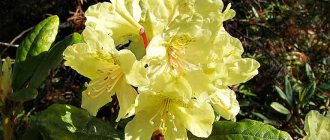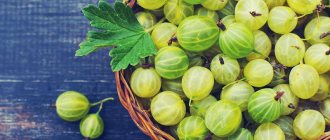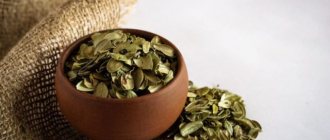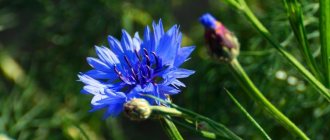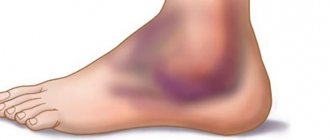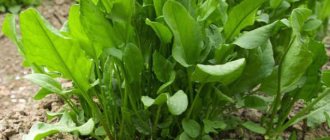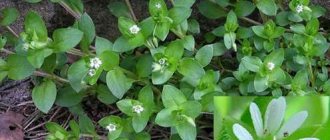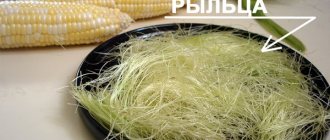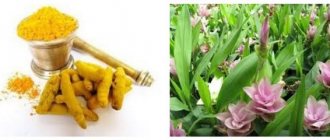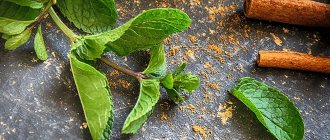What are the benefits and harms of Japanese quince, and why is it not too common? Some may not have even heard of this bright, golden-yellow pear-shaped fruit. As you can see in the photo, the Japanese quince bush, or Chaenomeles, is very attractive, and the beneficial properties of the product are unique. In fact, this is a useful gift of nature that should definitely be added to the list of regularly consumed products.
Japanese quince is a small and round pome fruit grown on shrubs. The benefits of decorative Japanese quince are often not properly appreciated. Although it may look deliciously sweet and juicy in appearance, its properties are completely different. In its raw form, it is very hard, astringent and sometimes sour. To enjoy all the benefits this product offers, it is best to prepare it. Japanese quince is an ideal ingredient for making desserts, especially in autumn.
What are the benefits of Japanese quince?
Japanese quince is a low-calorie product. As already noted, 100 grams of fresh raw pulp contains only 57 calories. In addition, Chaenomeles contains several vital polyphenolic antioxidants, in greater quantities than apples and pears. Each fruit is a storehouse of phytonutrients, such as dietary fiber, minerals and vitamins.
The quince pulp, together with the peel, has a significant amount of fiber. In addition, its grainy granules are composed of astringent compounds known as tannins, namely epicatechin and catechin. They react with carcinogenic toxins and chemicals in the colon, and thereby protect the mucous membrane from cancer, inflammatory bowel disease and diverticulitis. In addition, it helps reduce weight and the level of “bad” cholesterol (LDL) in the blood.
Japanese quince contains several phenolic compounds such as caffeoylquinic acid, procyanidin-B2, oligomeric procyanidin, polymeric procyanidin, etc., as well as many essential oils (furfural, limonene, linalool, vomifoliol, toluene, beta-ionone, a-terpineol etc.). All these compounds give the fruit its unique flavor.
Ripe quince fruit has a good concentration of vitamin C. One hundred grams of this fruit provides 15 mg, or 25% of the daily value of this compound. Fruits rich in this vitamin help remove harmful free radicals from the body. Vitamin C helps improve immunity, reduce the number of viral infections and inflammatory processes.
Japanese quince is an excellent source of minerals such as copper (130 mcg or 14% DV), iron, potassium and magnesium, and B vitamins, especially thiamine, riboflavin and pyridoxine (vitamin B6).
Quince fruits, like pears, have anti-allergenic and anti-inflammatory properties. Its seeds can be beneficial in the treatment of cystitis and atopic dermatitis.
For women
The benefits of Japanese quince fruit for the female body are as follows. Its use is one of the likely ways to lose weight and ensure a fast metabolism. This is achieved by improving digestion. Japanese quince is high in fiber, like many hard fruits. This means that the gastrointestinal system functions more regularly and efficiently: this way a person gets enough energy and can lose weight.
The significant content of vitamins and antioxidants contained in Japanese quince is very beneficial for maintaining youthful and healthy skin. These substances repair skin cells damaged by free radicals, thereby preventing the formation of wrinkles, removing blemishes and helping to protect the skin from ultraviolet radiation.
For men
The properties of Japanese quince fruits are considered unique. It contains potassium, which is essential for maintaining blood pressure and promoting efficient fluid transfer in the body. Potassium acts as a vasodilator, helping to relax arteries and other blood vessels, reducing stress on the cardiovascular system. This process helps reduce the risk of problems such as atherosclerosis, which increases the likelihood of heart attacks, coronary artery disease and stroke.
This fruit boasts amazing antioxidant properties thanks to the presence of polyphenolic compounds. Antioxidants fight free radicals present in the body, slowing down the aging process and preventing cardiovascular diseases and strokes.
Contraindications to the use of Japanese quince
Japanese quince contains a large number of useful substances.
However, it has a number of contraindications.
It is prohibited to use the fruit for peptic ulcers of the gastrointestinal tract, as it contains organic acids.
In chronic constipation, the astringent effect leads to an increase in the problem. You should not use quince if you have pleurisy, as essential oils irritate the respiratory tract and cause inflammation.
The use of the product is prohibited in case of individual intolerance and enterocolitis.
The peel of the fruit irritates the larynx, which affects the functioning of the vocal cords.
Therefore, the abuse of the product is prohibited for people whose work involves constant speech: announcers, orators, teachers, singers.
Is Japanese quince suitable for pregnant and lactating women?
On the one hand, Japanese quince is rich in folic acid, a compound necessary for a healthy pregnancy. In addition, quince lowers cholesterol levels and protects blood vessels, which is certainly beneficial. On the other hand, the fruit has a diuretic effect, so it is better not to abuse it. Ideally, you should limit yourself to three servings per week.
Important! Japanese quince should not be consumed with its seeds, as they can cause harm, especially in large quantities.
Japanese quince in cooking
What is most often prepared from Japanese quince (you will need sugar and water):
- candied fruit;
- marmalade;
- jam.
Stewed candied fruits. Initially, the jam is prepared from one and a half kilograms of sugar and one kilogram of fruit. Don't forget to add up to 3 glasses of water. Remove all fruits. The fruits are dried on plates, sprinkled with sugar, and can be stored in closed containers at room temperature.
Homemade jam . Place a kilo of chopped fruit in a saucepan and add about 2 cups of water. Heat the kettle over low heat. While the fruit is hot, it is crushed through a sieve. Mix purchased fruit puree with sugar. Baking powder is placed on a baking sheet, sprinkled with sugar or covered with parchment. Place the mixture on a baking sheet to form a 2 cm layer. Once cooled, the jam becomes crusty. The finished product should be stored in a cool, dry place.
Traditional jam recipe . You will need fruit with a minimum amount of tissue. Remove the peel, core and cut as desired. Place fruit in a boiling syrup consisting of 3 glasses of water and one and a half kg of sugar, wait for it to cook, finish heating and leave in the pan for several hours. Then cook and cool again twice, then make jam
Is Japanese quince good for children?
The benefits of Japanese quince and its use in children's diets are explained as follows. The ritterpenes and sterols it contains suppress the reaction that causes sore throat and the more dangerous subsequent rheumatic fever. In addition, the fruit has a proven anti-inflammatory effect, which reduces swelling and soreness associated with sore throat and airway swelling associated with colds and flu. Quince has been found to help fight sore throats caused by bacteria. The tannins in the fruit inhibit hyaluronidase, an enzyme produced by bacteria that causes painful swelling in the throat and nasal passages.
We recommend reading: What are the benefits of grapefruit for the body, calorie content and properties
Interesting! In one experiment, Japanese quince was found to stimulate immune function even when the immune system was weakened by other factors.
Homemade quince face masks and lotions
Quince cosmetics. What masks and lotions can be prepared from quince.
About the benefits of quince
Quince is rich in provitamin A; it also contains vitamins B1, B2, B6, C, E, PP and many other macro- and microelements. Quince contains potassium and sodium. Quince is rich in malic and citric acids. In cosmetology, ripe fruits and seeds of quince are used. At home, you can prepare lotions and masks for oily skin from quince fruits. In general, quince is widely used to care for any type of facial skin.
❧ Historians believe that quince fruits are the notorious “golden apples” that grew in Eden on the Tree of the Knowledge of Good and Evil. In Ancient Greece, the bride was required to eat a quince fruit to freshen her breath before entering the marital bedroom. Plutarch considered the quince to be a fruit that the newlyweds should share on their wedding day in the wedding chambers.
Quince lotion for all skin types
The lotion has a toning and smoothing effect. To prepare it, peel 2 quince fruits, add vodka or 20% alcohol and leave for 2 weeks. Strain, mix with rose water in a 1:1 ratio. Wipe your face and neck with lotion, then apply cream to the skin.
Quince lotion for oily skin care
Finely chop the quince, pour in 1 glass of vodka or 20% alcohol, leave for 7 days, strain. Wipe your face with the resulting lotion. At the end of the procedure, rinse your face with warm water.
Quince lotion for aging skin
Cut the ripe quince into small slices, pour in boiled warm water so that the water covers the quince. Leave for 2-3 hours, strain and add 10 g of vodka per 100 g of liquid. Use lotion instead of washing: wipe the skin.
Mask for oily skin care
The mask helps improve the appearance of the skin: the face becomes velvety, soft and matte. Beat one egg white, add ½ cup quince juice, 1 tsp. camphor alcohol. Soak a cotton swab in the mixture and cleanse porous, oily facial skin.
Quince masks for normal or dry skin
Grate the quince on a fine grater and mix with the yolk and cream in equal quantities. Apply to facial skin for 15-20 minutes, rinse with warm water.
✿ ✿ ✿
1 tbsp. l. Grind butter with 1 egg yolk, add 1 tbsp. l. mashed quince pulp, 1 tsp. honey, stir until smooth. Apply to face for 20-30 minutes, remove excess with a paper towel. Rinse off with warm water.
Quince mask for dull, aging skin
The mask according to this recipe tones, nourishes and softens the skin. To prepare it, 1 tbsp. l. mix honey with the yolk of 1 egg, add 1 tsp. quince juice, 1 tbsp. l. vegetable oil. Mix everything thoroughly and apply to the face for 15-20 minutes. Rinse off with warm water.
Quince mask for age wrinkles
For severely wrinkled, aging facial skin, you can use a mask according to the following recipe. Grate the quince on a fine grater, mix the resulting pulp with whipped egg white and apply to the face. Rinse off with warm water.
Quince products for aging skin
This product restores elasticity to aging, wrinkled skin and reduces the number of wrinkles. You can use a slice of ripe quince to massage your face.
✿ ✿ ✿
Pour 1 tbsp into 1 glass of water. l. quince juice, 1 tsp. cologne and 1 tsp. glycerin. Wipe your face with lotion.
Quince remedy for freckles
This quince product helps whiten freckles, age spots, and is suitable for caring for oily skin. To prepare it, grate ripe quince on a fine grater and squeeze out the juice through cheesecloth. Soak a cotton swab in quince juice and wipe the skin.
Quince products for oily hair care
Pour 30 g of quince seeds into 1 glass of water and leave for 1 hour. Place over low heat, bring to a boil and strain. When warm, rub the decoction into the scalp for seborrhea and oily hair. When your hair is dry, rinse with warm water. It is recommended to carry out this procedure daily for a week. The mixture can be stored in the refrigerator.
✿ ✿ ✿
Cut out the core of the quince, chop it, add a small amount of water, and boil for 3-5 minutes. Rub the cooled mixture into the scalp. After an hour, rinse with warm water without using shampoo.
Quince remedy for burns
Pour quince seeds with boiled water in a ratio of 1:50, shake for 5 minutes, strain through cheesecloth. It is recommended to lubricate the burned areas with the resulting infusion 1-2 times a day.
We recommend watching:
Hair care. Hair balms
Viburnum face masks. How to cook?
Providing first aid for burns
Just the facts
What to do if you are burned by boiling water or steam
What diseases does Japanese quince help with?
In traditional Chinese and Japanese medicine, quince is considered a tonic—a medicine that stimulates strength and energy for healing. It is believed to increase the body's own ability to heal itself. The medicinal properties of Japanese quince are multifaceted, including cancer prevention, weight loss, skin care and much more. In general, the benefits of Japanese quince are as follows.
- Prevents cancer. Oncology is one of the most discussed problems these days. It is not surprising that anything that can reduce the likelihood of developing this condition immediately becomes quite popular. The high content of antioxidants, including phytonutrients and phenolic compounds, is very effective in eliminating and neutralizing free radicals in the body. These elements are byproducts and dangerous products of cellular metabolism that can cause healthy cells to mutate or die, causing harm to the body. The antioxidant substances found in the product are directly linked to reducing the risk of most types of cancer.
- Treats gastrointestinal diseases. In addition to the improved digestive tract function that fiber provides, the fruit may also help prevent a number of gastrointestinal diseases, including inflammatory bowel conditions or diverticulitis. Epicatechin and catechin, which are part of the fiber, react with some carcinogenic toxins that accumulate in the colon. This helps protect the mucous membranes of the gastrointestinal tract.
- Regulates blood pressure. Potassium is one of the most important minerals in the human body as it is needed to maintain blood pressure and efficiently transport fluid throughout cells. Since it is contained in quinomeles in sufficient quantities, it will help normalize blood pressure.
- Allergic reactions. Japanese quince has long been renowned for its ability to keep allergic reactions under control. When applied as a gel or balm to the skin, it is beneficial in relieving the symptoms of atopic dermatitis and other similar skin conditions. High amounts of vitamin C help control inflammation levels and improve the appearance and health of the skin.
- Increases immunity. As noted above, quince has a large amount of antioxidants. They, along with vitamins (particularly C and E), stimulate the immune system in a variety of ways. For example, vitamin C helps increase the supply of white blood cells, which are the body's main line of defense against viruses, pathogens and bacteria.
Medicinal properties of Japanese quince: scientific data
But the benefits of Chaenomeles are evidenced not only by records in ancient Chinese and Japanese texts. Modern scientists have long taken these fruits into their sights. And I must say, we learned a lot of interesting things about them.
It turned out that polyphenols contained in Japanese quince have anti-cancer properties. Laboratory experiments have shown that substances extracted from Chaenomeles are capable of inhibiting the growth of cancer cells, reducing the ability of healthy cells to mutate, and also neutralizing substances that cause the formation of metastases. Chaenomeles extract has shown itself best in the fight against breast and prostate cancer.
Triterpenes and sterols found in these fruits have been shown to effectively fight streptococcal infections, treat pharyngitis and rheumatism. These substances not only have anti-inflammatory properties, but also reduce swelling in the body. Researchers have also discovered the benefits of Japanese quince for the treatment of sore throat: the fruits contain substances that inhibit the activity of bacteria that cause sore throat.
An experiment on laboratory rats confirmed the effectiveness of Japanese quince as an immunomodulatory product. Scientists have also scientifically confirmed the correct use of chaenomeles for the treatment of arthritis and rheumatism.
Scientists have also identified the most effective form of Chaenomeles for combating inflammation in the joints. This medicine turned out to be a 10% alcohol infusion of Japanese quince.
The fruit extract not only relieves pain and swelling, but also slows down the progression of the disease, and the anti-inflammatory effect on joints provides a long-term effect.
Best materials of the month
- Coronaviruses: SARS-CoV-2 (COVID-19)
- Antibiotics for the prevention and treatment of COVID-19: how effective are they?
- The most common "office" diseases
- Does vodka kill coronavirus?
- How to stay alive on our roads?
Experiments by scientists have confirmed the benefits of chaenomeles for treating the liver (including various types of hepatitis), getting rid of diarrhea and other gastric diseases. Researchers also found that this oriental exotic is very useful for the treatment of nervous disorders, migraines, depression, stomach ulcers, and the fruits should also be consumed to prevent Parkinson’s disease and lower cholesterol.
Fresh fruit pulp has found its application in cosmetology. Such fruit masks are useful for toning facial skin, lightening freckles and age spots, and moisturizing aging skin. A decoction of Japanese quince leaves contains large reserves of copper, and it is known to be the best element for preventing gray hair.
Traditional medicine recipes
The use of Japanese quince for health benefits has been practiced for a long time. Its beneficial properties are used to prepare decoctions and tinctures that help against many diseases. It can improve metabolism, reduce inflammation and boost immunity, help cope with gastrointestinal problems, and so on.
Quince tincture
The healing properties of Japanese quince are most concentrated in vodka tincture. To prepare it, only ripe fruits are taken. They are washed and completely cleared of seeds, after which the pulp is cut into small pieces. Place everything in a jar and fill it with vodka so that the chaenomeles is completely covered. Cover the container with a lid and transfer it to a dark place for three weeks. After this time, sugar is added to the mixture and left to brew for another week. The finished healthy tincture of Japanese quince should be strained and poured into small sealed containers. It is better to store it away from light sources. For half a kilogram of quince pulp you will need 150 grams of granulated sugar and 800 ml of vodka.
Important! Despite its many beneficial properties, alcohol-containing tincture should not be consumed. Otherwise, you can harm yourself and even get poisoned.
Quince seed decoction
The benefits of Japanese quince seeds are controversial. On the one hand, they contain a lot of useful substances, on the other hand, they contain a certain amount of cyanide, which can cause harm. Therefore, you should brew them whole so that a minimum amount of a dangerous compound gets into the decoction.
The beneficial properties of this decoction are most pronounced in the treatment of coughs and inflammation in the throat. It is also effective as an external remedy for burns and skin diseases.
To prepare a decoction with healing properties, you will need 10 grams of seeds. They are poured with a glass of boiling water and boiled in a water bath for approximately 15 minutes. The finished product is filtered and consumed three times a day.
Infusion of quince seeds
The benefits of Japanese quince seeds are also used in the treatment of hoarseness in the throat and trachea, as well as other ailments. Their oil prevents sweating, strengthens the heart, liver and stomach. To avoid harm from the cyanide contained, the infusion is made with water. To prepare it, 10 grams of seeds should be poured with water (in the amount of a liter) and left to infuse for approximately 12 hours.
What's the benefit?
Oddly enough, sour fruits have a beneficial effect on the stomach and digestion in general. They help eliminate inflammatory processes, and in case of poisoning, remove toxins and protect the mucous membrane from their absorption. It is especially useful to eat quince in case of anemia to increase hemoglobin. It is no less important for the cardiovascular system, normalizing its functioning.
Fresh Japanese quince fruits are recommended to be included in the diet of children and pregnant women, since these two categories have an increased need for iron.
Chaenomeles will be beneficial and in complex therapy will help get rid of diseases such as:
- hepatic;
- renal;
- colds;
- gastrointestinal;
- bronchitis;
- nervous exhaustion.
The use of Japanese quince in cosmetology
The beneficial properties of Japanese quince seeds and leaves are widely used in cosmetology. In this case, when used externally, they cannot cause harm. An extract from the leaves of the plant has a softening, moisturizing and anti-inflammatory effect. A decoction of them can be useful in the treatment of brittle hair, dandruff and seborrhea.
Plant extracts also help with oily hair and skin. The beneficial properties of seed decoction are widely used to eliminate eye fatigue. It is also used to wipe problematic facial skin.
Interesting! Extracts from Chaenomeles seeds can be found in many pharmaceutical products intended for facial care.
The use of Japanese quince in cosmetology
Cosmetologists are well aware of the beneficial properties of quince leaves and seeds. They do not cause any harm to health, as they are used only externally. Leaf extract has a moisturizing, anti-inflammatory and softening effect. A decoction of leaves and fruits is beneficial for the treatment of seborrhea, dandruff and increased hair fragility. Preparations based on Chaenomeles extracts are used for excessive oily skin and hair.
A water decoction of the seeds is effective in the form of lotions against fatigue and discomfort in the eyes. Use cotton swabs soaked in the broth to wipe problematic facial skin. Derivatives from the seeds are present in masks and lotions for skin care.
What can be prepared from Japanese quince
Many would agree that this Japanese quince tastes too tart and unpleasant when eaten raw. However, if consumed frequently, over time the taste buds will adapt and the fruit will taste delicious. Some experts say that the texture of Chaenomeles takes some getting used to. It resembles a cross between an unripe pear and a hard apple.
Since the fruits contain a lot of pectin, they are most often consumed in the form of jelly, jam, marmalade, juice or compote. It is also possible to bake Japanese quince in the oven. In addition, it is great for filling in pies, pies and muffins.
Advice! Quince can be cut into cubes and boiled with apple juice concentrate, turning the whole thing into a sour puree that can be added to porridge or muesli instead of raisins.
Compote
The benefits of Japanese quince compote are undeniable: it contains many vitamins and can strengthen the immune system. It is especially good during the season, when you can enjoy a freshly prepared drink. Preservation somewhat reduces its beneficial properties. To cook compote, you need the following:
- 500 ml water;
- 200 grams of granulated sugar;
- half a vanilla pod, cut in half;
- 1 cinnamon stick;
- 1 kg quince;
- juice of half a lemon.
We recommend reading: Grapefruit juice: benefits and harm
In a saucepan, mix water, vanilla bean, sugar, cinnamon stick and bring everything to a strong boil, stirring until the sugar is completely dissolved. At this stage, you need to boil the mixture for one minute and turn off the heat.
Immediately you need to prepare a bowl of cold water and lemon juice. Japanese quince must be peeled with a sharp knife, cut in half and cored. After this, each fruit is cut into four or eight parts, depending on the size. All these pieces need to be placed first in water with lemon for a few minutes, and then back into the hot syrup. Turn the heat back on, bring the mixture to a boil and simmer on low for about 50 minutes until the pieces are soft and pink. When the compote is ready, remove the cinnamon stick and vanilla pod. It is advisable to cool the drink before serving.
Juice (recipe + benefits)
The beneficial properties of Japanese quince are not yet well studied at the medical level, but the juice from it has traditionally been used to relieve digestive disorders, including stomach and intestinal pain, as well as diarrhea. It also helps with coughs. Since quince contains several phenolic compounds and essential oils, its fruits have a unique aroma. Ripe Japanese quince juice is an excellent source of vitamins B and C, as well as the minerals copper, potassium, iron and magnesium, which provide undoubted benefits. Due to its too tart taste, it is recommended to make it with the addition of other fruits. For one of these healthy drinks you will need:
- 1 quince;
- 1 slice of fresh lemon;
- 1 orange;
- 1 apple;
- 1 cup fresh pumpkin pulp, cubes;
- a pinch of cinnamon.
First you need to clean all the components of the Japanese quince from the peel, seeds and cores, the beneficial properties of which are minimal. After this, everything is crushed in a blender to a thick smoothie, which should be diluted with water to taste.
Jam (recipe + benefits)
The benefits of Japanese quince jam are as follows. Since the fruits contain a lot of pectin, they do not need to be cooked for a long time. This means that the beneficial properties of the product are not lost during processing. All vitamins and minerals are preserved in the finished jam. To cook it, you will need the following:
- 1 kg quince;
- 2 lemons;
- 1.5 kg granulated sugar.
First of all, you need to wash the quince fruits. There is no need to peel them: just cut them into quarters and remove the core. The prepared pieces are placed in a large bowl and poured with the juice of one lemon. All this should be filled with water to avoid darkening of the quince.
Next, the Japanese quince pieces should be placed in a medium saucepan with one liter of water and brought to a boil over high heat. After this, the heat must be reduced and the jam simmered over low heat for 1 hour.
Then most of the water should be drained, and the quince fruits should be cut into 1 cm pieces and placed back in the pan with sugar and the juice of the remaining lemon. The contents of the pan must be stirred until the sugar dissolves, then brought to a boil over low heat. Cook for 45 - 60 minutes until the quince turns pink. This healthy jam should be stored in sterilized jars.
Important! Do not add seeds to the jam as they can be harmful, especially if the product will be stored for a long time.
Is it possible to eat Chaenomeles? Beneficial and medicinal properties of Chaenomeles (Japanese quince)
The beneficial effects of Chaenomeles fruits on the body are as follows:
- strengthening the immune system;
- increasing the protective properties of the body;
- removal of toxins and heavy metal salts;
- strengthening the walls of blood vessels and capillaries;
- increased membrane permeability;
- normalization of the circulatory system;
- preventing the development of diseases of the respiratory system, as well as effective elimination of symptoms of existing diseases;
- prevention of the development of atherosclerosis and joint diseases;
- effective treatment of purulent and inflammatory elements of the upper respiratory tract and the finished cavity;
- preventing diseases of the visual organs, improving the functions of the optic nerves, restoring the clarity and quality of visual perception;
- normalization of stool;
- equalization of blood pressure;
- normalization of blood sugar and cholesterol levels;
- improving the microflora of the female reproductive system;
- prevention of liver diseases, including cirrhosis and hepatitis;
- preventing the development of scurvy;
- strengthening bones, joints and the musculoskeletal system as a whole;
- reducing the effects of radiation and exposure.
Quince has many beneficial properties:
- atherosclerotic;
- antibacterial;
- antispasmodic;
- diuretic;
- immunomodulatory;
- anti-inflammatory;
- wound healing.
Quince flowers help regulate the amount of gastric juice secreted and normalize acidity. Quince fruits help to quickly restore strength in the postoperative period.
Juice from the fruit promotes the healing of wounds and damage to the skin, and is also successfully used in cosmetology to improve the condition of the skin, fight small wrinkles, lighten freckles and age spots, and nourish the upper layers of the epidermis.
Lotions with quince juice diluted with water are indicated for the following diagnoses:
- dermatitis;
- skin burns;
- athlete's foot;
Japanese quince is useful under difficult working conditions and work in production, as well as under unfavorable ecology of the region of residence. The fruit helps with nausea and minor ailments.
Laboratory studies have shown that Japanese quince contains a large number of substances of various classes:
- organic acids;
- pectins;
- tannins;
- phenols and their derivatives;
- esters and essential oils;
- alcohols;
- anthocyons;
- saccharides.
Quince is an excellent product for preventing the development of anemia, since just 100 g contains at least 17% of the daily requirement of iron.
Harm of Japanese quince and contraindications
Are the benefits and harms of Japanese quince for human health clear? In fact, there is no clear evidence of the existence of side effects or possible harm associated with the consumption of chaenomeles. All available evidence indicates that these fruits are an excellent component of any diet.
However, quince seeds contain a small amount of cyanide, and for this reason you should not eat more than a few pieces. Otherwise, it may cause harm, causing poisoning. Currently, additional scientific research is being conducted to study the benefits and harms of Chaenomeles.
Possible harm from its use can also be caused by allergic reactions, since it contains a lot of active substances. Another contraindication is the presence of acute inflammation in the large and small intestines.
Important! To minimize the damage caused to tooth enamel by the acids contained in the product, it is recommended to rinse your mouth after eating it, especially in its raw form.
Features of using quince
Japanese quince fruits are actively consumed by food. Compotes, tinctures, juices are made from it, and are actively used in cooking. The fruit can be eaten raw, like apples. Dried chips are made from it, baked, and served with meat.
The value of Japanese quince does not end with the use of the fruit. Cosmetics and medicines are made from various parts of the plant.
In folk medicine
Quince is actively and very successfully used in folk medicine. It is used both for the prevention and treatment of a wide range of diseases. Basically, decoctions, juices are made from it, and seed infusions are made.
Leaves
The leaves can be used fresh or dry. Healing teas are made from them.
Attention! The leaves are not always the only component of tea. You can find recipes where quince bark or fruits are added to tea to enhance the healing effect.
In addition to teas, the green parts of quince can be finely chopped and turned into a powdery mass. When you mix this powder with nuts and lemon, you get a powerful nourishing mask, rich in beneficial vitamins and microelements.
Seeds
The seeds of this plant also have beneficial properties. Before use, they are dried in the oven at a low temperature not exceeding 50 C°. Readiness can be judged by the appearance of a whitish film on their surface.
Important! Grinding seeds is contraindicated. This can lead to the release of toxic substances from them, which will invariably cause poisoning.
After drying, decoctions are prepared from the seeds. It is necessary to ensure that not a single seed is damaged.
Fruit
Juices are made from the pulp of ripe fruits. They have a diuretic effect. Juices can be made from several ingredients. Apples, pears, peaches, and bananas fit perfectly into the composition.
Important! Picked quince fruits must be aged for 15-20 days before they are released for juice. During this time, the biological activity of the substances in the fruit will increase.
It is not recommended to drink juice on an empty stomach. It contains a large amount of acids that can cause heartburn. It is optimal to drink a glass of freshly squeezed juice 2 hours after your first meal.
Use in cosmetology
This plant is widely used in cosmetology. It can be added to mask components. It has a beneficial effect on the skin, cleansing and tightening it. The leaves of the plant have healing properties for hair. After such masks, hair will begin to grow faster and a natural shine will appear.
There are many recipes for homemade masks, after using which the skin on your face takes on a transformed appearance.
Mask for oily skin
To overcome this problem, you need to finely grate the ripe fruit of the plant. You can apply the resulting mass in its pure form, avoiding contact with the delicate skin around the eyes. Leave the mask on for no more than 7 minutes, then wash off with warm water and wipe your face with moisturizing lotion.
Important! Before using any masks that contain quince, you must perform a simple allergy test. Apply a little juice to the skin of your wrist or elbow. If after a couple of hours you do not find any redness, you can safely apply the mask to your face.
To enhance the effect, you can add additional components. A mixture of protein with quince fruits will free oily skin from blackheads and whiten traces of inflammation. When you add aloe to the mixture, you will get a moisturizing and mattifying effect.
Quince for dry and combination skin
For such skin types, it is recommended to add fatty components to the composition of masks with quince.
The crushed fruit must be mixed with cream that has a high fat content. Add the yolk. Mix the ingredients thoroughly and apply to the face. If possible, the mass can be warmed up a little. Keep the mask on for 20 minutes, then rinse with warm water. It is better not to wipe your face, but to wipe away large drops with a soft cloth, this way the skin will be better saturated with moisture.
Another mask recipe can be made at night. To do this, you need to mix quince pulp with a teaspoon of glycerin. It is recommended to keep this mixture on your face for half an hour. It is not necessary to wash off such a mask completely; it is only important to remove large remnants of pulp. In the morning, wash your face with warm water.
Hand lotion
A lotion made from quince will help rid you of using cream forever. To do this, cut the fruit pulp and pour a glass of vodka. Infuse the mixture in a dark place for 2 weeks. After the expiration date, it is worth pouring a tablespoon of glycerin into the resulting infusion.
This lotion moisturizes, nourishes and disinfects the skin of your hands.
Antifungal seed decoction
A decoction of quince seeds will help get rid of foot fungus. To do this, pour boiled water over the plant seeds and keep them in a water bath for 3 hours. You can strain it. It is recommended to keep skin prone to fungal infections in this decoction. They also wipe the affected areas with a cotton pad several times a day.
Anti-dandruff infusion
To get rid of dandruff, you need to prepare an infusion. The crushed quince is poured with hot boiled water. You can also add the leaves of this plant. The resulting liquid is infused for several hours and then rinsed. This infusion will reduce inflammation on the scalp, reduce the amount of dandruff and eliminate itching.
Examples of culinary recipes
Quince is added to many dishes. It is used in everything. From side dishes to desserts. Soup with added quince. To prepare you will need:
- Meat 0.5 kg (any: poultry or animal).
- Potatoes 2 pcs.
- Quince fruits.
- Onion 1 pc.
- Sugar 200g.
- Salt.
Place meat and potatoes into boiling water. In the meantime, prepare frying onions. Cut the quince into small pieces and simmer in sugar syrup. This must be done until the fruit becomes transparent.
As soon as the meat and potatoes have become soft and cooked, add the quince and onion to the broth. Cook for a few more minutes. The soup should be served hot.
Jam
Japanese quince jam with walnuts. The fruit must be cut into small pieces; the seeds and internal parts will not be needed for jam. Prepare sugar syrup. Add the chopped pieces to it and cook for 10 minutes. After this, you need to let the jam sit for a day. Then boil again until boiling for 5 minutes. Then we leave it again for a day. Then put on the fire and bring to a boil, add walnuts and lemon zest.
Candied fruit
You can make tasty and healthy candied fruits from quince. For preparation you will need:
- Quince fruits.
- Sugar – 1 glass.
- Water – 0.5 liters
- Lemon acid.
We thoroughly wash the fruits. Peel off the peel. Boil the peelings in boiling water for 20 minutes. Then we filter the broth and add the chopped fruit pulp itself. Boil for 20 minutes, remove from water and cool.
Add half a glass of sugar to the broth. Place the quince in the syrup and boil. Cook for 5 minutes, stirring gently. Leave it like this for 12 hours. Then add the remaining sugar to the pan and cook again until boiling for 5 minutes. These manipulations must be repeated up to three times. Lastly, add a pinch of citric acid. Then we take out the candied fruits and dry them. Sprinkle with powdered sugar. The treat is ready.
Wine
To make homemade wine you will need the following ingredients:
- 10 kg quince.
- 0.5 liters of water.
- 0.5 kg sugar.
- Lemon acid.
Grate the fruit pulp on a fine grater. Place the mixture in an enamel bowl. Dissolve the prepared sugar in cold water and pour into the grated quince. This is how the wort turns out. It needs to be infused in a dark place for several days. Stir the mixture every day. During the day, fermentation processes begin to appear. After aging, the mixture is filtered through cheesecloth. Add citric acid to the liquid at the rate of 7 g per 100 ml of juice, and add 150 g of sugar.
The wort is poured into a fermentation container and stored in a dark place. After 5 days, add 50 g of sugar. After another five days, repeat the procedure. The wine must ferment for at least 25 days. Then carbon dioxide ceases to be released, the drink becomes transparent, and a sediment forms.
The wine must be aged for at least 6 months. Before storing the liquid, it is necessary to get rid of sediment by settling and pouring the wine. It is better to keep the drink in a cool place.
How to select and store Japanese quince
These fruits ripen in the fall, and many people unknowingly avoid them on the counter. Unfortunately, quince is not a very well-known product of the autumn season. Most consumers do not know how to choose it correctly.
Japanese quince, when unripe, often looks like a large light green plum. When it is ripe and ready to eat, it reaches a bright yellow hue with small splashes of brown. In addition to its pleasant appearance, its sharp fruity aroma attracts attention from afar.
To make the most of the beneficial properties of Chaenomeles, you should choose the brightest and most aromatic fruits. They should not have any external damage or darkening.
It is best to store Japanese quince in the refrigerator or a cool, dark place.
Advice! Even if, upon purchase, the fruits seemed perfectly fresh and undamaged, you should definitely sort them out and look at them again.
Restrictions
In general, there are no direct contraindications to the use of quince, either for food or for medicinal purposes. However, caution should be exercised when introducing fruits into the diet of young children. Excessive consumption of quince can lead to constipation, as well as hemoglobin levels going off scale. A similar effect is observed in women in an interesting position, so there is definitely no need to eat kilograms of quince. And one more nuance: when using seeds to prepare medicinal decoctions, they cannot be crushed due to the amygdalin contained in the poison.
